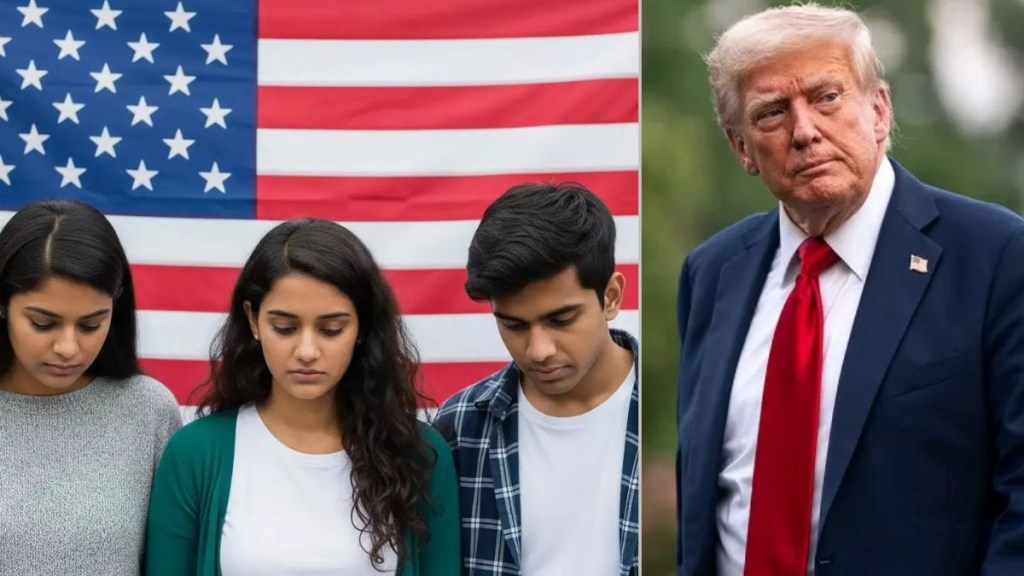US President Donald Trump‘s 25% tariff bomb on India will not only impact Indian exporters but also 4.2 lakh Indian students living in the United States and those planning a trip. Indian students, who have already been facing the brunt of a depreciating rupee, will face a double whammy with the onslaught of a heavier tariff burden.
How will tariffs impact rupee depreciation?
With the new tariff in place, expenses such as tuition, rent, and daily living costs are likely to become more expensive for Indian students.
“The (rupee) depreciation has made overseas education more expensive, as tuition fees, housing, and living expenses, all priced in foreign currencies, now require higher rupee outflows. This makes it essential for students to rethink their financial strategies,” Vinay Singh, Executive Director & CEO of Thomson Digital and Q&I, told CNBC-TV18. Aayush Nagpal, Founding Team Member and Business Head at GradRight, added that between 2018 and 2025, the cost of studying abroad has already risen by nearly 24% due to rupee depreciation alone.
Tariffs reduce both the profitability and volume of exports. Since exports are a key source of foreign currency, their decline results in lower forex inflows. When this is combined with capital outflows from foreign portfolio investors (FPIs), the demand for US dollars increases relative to the rupee, leading to a depreciation in the rupee’s value.
Will it impact the pricing of daily essentials?
Another major consequence of Trump’s proposed 25% tariff on Indian exports is the impact it could have on the everyday expenses of Indian students in the United States.
While tariffs are essentially import taxes, the effects ripple far beyond trade figures. When the US hikes duties on Indian goods, exporters often try to absorb part of the cost initially to stay competitive. However, as profit margins shrink and operational costs rise, the increased burden is usually passed down to consumers, in this case, Indian students.
Items most affected include low-cost medications and healthcare products frequently couriered from India, which already offer students savings of 30–50% compared to US pharmacy prices. Indian spices and packaged foods, a staple for nearly 90% of Indian students who prefer cooking at home to save money, are also likely to become more expensive. Additionally, Indian textiles and festival supplies used for cultural gatherings, along with budget smartphones and electronics shipped from India, could see notable price hikes.
For instance, if an Indian grocery order worth $100 is hit with a $25 tariff, US retailers typically add another 10 to15% markup for handling and storage, pushing the total price increase to around $30 to $40 per order, as reported by Times of India.
While these might appear as minor bumps, they accumulate quickly. An extra $10 per month on groceries, $15 more for medications each semester, or an additional $40 for replacing a phone annually could push a student’s yearly expenses up by $300 to $500.
This is a significant addition, considering the average Indian student already spends between $12,000 and $18,000 per year on living costs. Hence, Indian students in the US are likely to face a similar financial squeeze. As tariffs on their most commonly imported essentials ripple through the supply chain, already tight student budgets will feel the strain.
Is there a chance for an increase in tuition fees?
Whenever there is an economic uncertainty or unpredictable situation, universities often raise their tuition fees primarily on international students, who already pay premium rates. This approach helps universities offset revenue losses but increases the financial burden on foreign students amid trade tensions and other economic challenges.
Many US universities rely heavily on endowments tied to foreign investments and revenue from international student enrolments. A hostile trade relationship can disrupt this funding and create an unwelcome atmosphere toward non-resident students.
While not always directly linked, trade disputes can influence immigration policy and delay visa processing. This can affect student mobility, complicating scholarship use and access to overseas research opportunities. Although the immediate impact may affect only specific cohorts, a prolonged freeze or reduction in scholarships and research funding could gradually reduce the number of Indian students able to pursue higher education in the US. As a result, many may look toward alternative destinations that offer more predictable funding and a friendlier policy environment.

